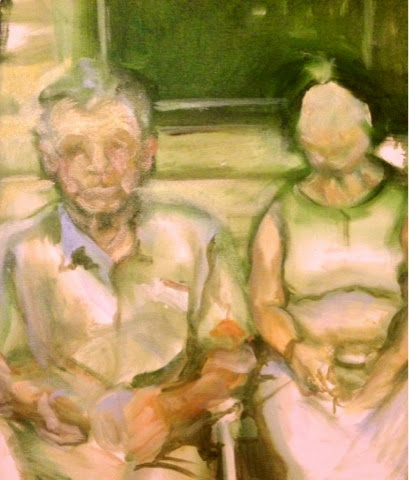In a recent Instagram post by the lovely
Jessica Joslin, she featured an image containing a wonderfully highbrow artist statement. Following this admirable act of word smithery, was this text:
"Artspeak (aka International Art English) and the way that it is typically used to obscure meaning and intent, rather than communicate ideas, really puts a bee in my bonnet. However...this automatic artist statement generator really is a thing of beauty... 😃 http://500letters.org/form_15.php" @jessica_joslin
How this thing may ease my mind in future endeavours, in proposals, shows, reviews, features and any kind of sales, is unmistakeable. But the fact that this translator so successfully creates this 'Artspeak', a language unto itself, in a way not so unlike Google Translate, is a bit troubling... and it says a lot about the contemporary art world. In fact, the way it loves to leave some people out has perhaps a purpose that can be read into further.
Artspeak is an exclusive language, and most people like to be part of the 'in' crowd. Beyond the art school students who pour thousands of dollars into an education with a requirement of this knowledge as a basic, who really knows how to speak it? Intellectuals, maybe linguists, and probably wealthy collectors. I struggle to see where the 'average' person fits in, and I see it often on a more visual basis, with the contemporary ideal of fine arts (in Vancouver) appearing to be highly conceptual.
I will never forget the day when my grandparents, parents and I visited the National Gallery of Canada. There had been some recent news of a painting bought for $1.76 million, and I remember, in my awkwardness as child-artist, feeling ostracized by its simplicity. At the time I only really understood art of realness, as I had spent most of my time understanding that the renaissance was a good time for painters, and Robert Bateman was my mother's grail.
This basis of understanding wasn't so different as a child, as it was as a parent. My family felt significantly less pressured to like it, in that I felt I SHOULD like it, or get it, as I really, really wanted to grow up and be an artist.
The painting was called 'Voice of Fire' and it was by a painter called Barnett Newman (I'd post it for you, but I'm not sure licensing, so I'll just link to it
HERE).
As an adult, I understand its importance as the type of art it exemplifies, and after reading further I have understood that this piece was intentioned as an investment- it was a good idea, not in aesthetic or even in artistic sensibility, but for a wallet. The idea of art like this is to generate funds, an item symbolizing commerce instead of a coin. This work was essentially worth the cost of supplies, when it was made, but when it was purchased by a national gallery they gladly put a cost of over a million dollars because- guess what?
Art prices snowball. This piece has likely multiplied in value, just like anything you might put in a gallery space, in front of a highbrow crowd. This is why we constantly have this discussion about what art means to us, because there is something deeper, and if the average crowd had a more transparent idea of where their tax dollars were spent, they would understand why it was done. Newspapers didn't get it, it wasn't explicitly placed in the galleries for people who didn't attend art school to read about, they didn't get the memo because they weren't part of the 'in' crowd- but hopefully, one day they'll hear that this piece is loaned out to some other rich schmaltz and they pay us an extortionist amount of money that will pay for our subsidized health care, get more special needs assistants in schools and maybe even give us a nicer tax return because we invested in art!
Artspeak is separating our investments from a casual art-viewing culture. It's the barrier that stands between 'us' and 'them', and the verbal embodiment of the white-walled, high-ceilinged gallery that makes us all feel like we're looking at something important. I suppose, what I've been missing, is the understanding that pure visual art can speak for itself: when in fact, throughout art history it has been the propaganda of the art, the divination of it, that has made it so important.
-C.









